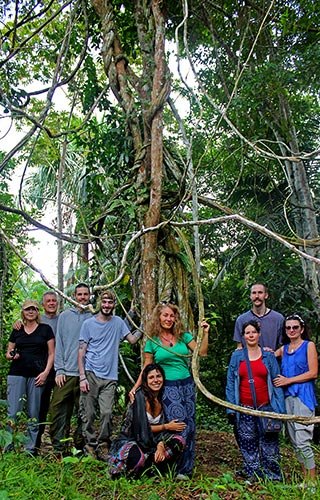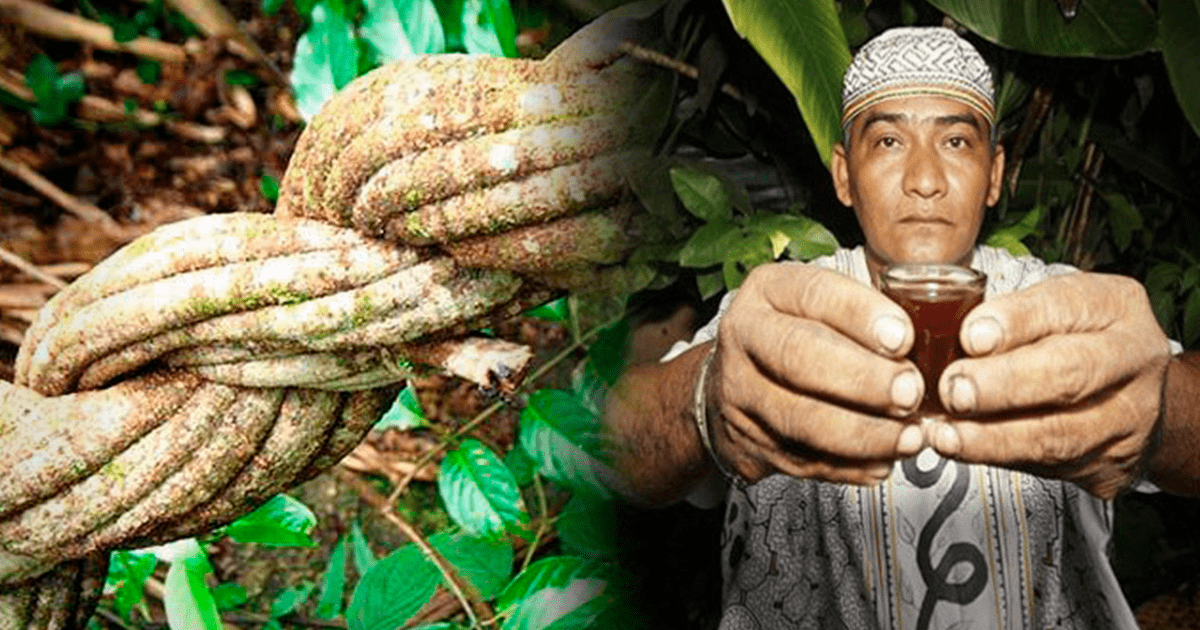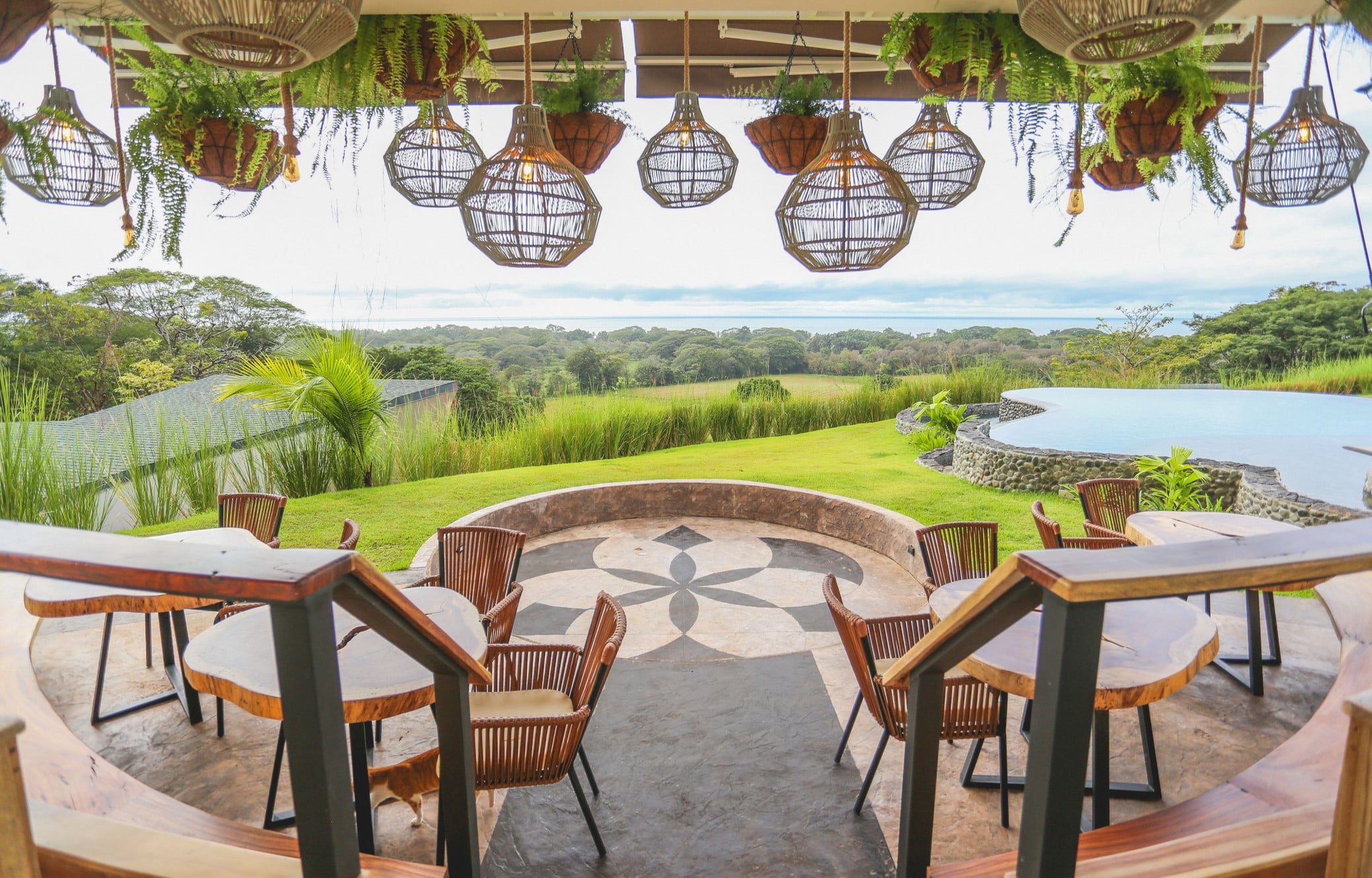Welcome to the Ayahuasca Experience blog, where we explore the profound journey of healing. Today, we delve into a candid discussion on does Ayahuasca make you poop and vomit, demystifying the physical aspects of this sacred ceremony.
Understanding the Physical Purge: Navigating the Digestive Challenges During Ayahuasca Ceremonies
Physical purging is a well-known aspect of the ayahuasca experience, often manifested through vomiting, diarrhea, or both. It is commonly understood among indigenous cultures and seasoned practitioners as not just a side effect but as an integral part of the healing process. The idea is that this purge facilitates a deep cleansing on both physical and spiritual levels, expelling negative energies and built-up toxins.
During an ayahuasca ceremony, participants consume the brew made from the Banisteriopsis caapi vine and Psychotria viridis leaves, a combination that has been used for centuries in traditional Amazonian healing practices. The active compound, dimethyltryptamine (DMT), along with other alkaloids in the mixture, brings about profound psychoactive effects, which often include introspective insights and emotional release.
For those attending an ayahuasca retreat, it’s critical to prepare for the possibility of a physical purge. Retreat facilitators may advise dietary restrictions prior to participation, known as a dieta, to reduce the intensity of the digestive challenges. This typically involves avoiding processed foods, red meat, dairy, and certain medications and drugs, to purify the body in anticipation of the ceremony.
During the ceremony, it is crucial to remember that the physical purge is a natural and potentially beneficial part of the experience. Some participants may feel a sense of resistance towards this aspect of the process, fearing discomfort or embarrassment. However, embracing the purge can be seen as surrendering to the ayahuasca’s healing capabilities and trusting in the ceremonial space held by experienced facilitators and shamanic healers.
Additionally, it’s essential to stay hydrated and allow the body to recover after intense purging. The facilitators of the retreat are usually equipped to provide support and ensure the safety and comfort of participants throughout this challenging phase.
In conclusion, while the physical purge during an ayahuasca ceremony can present a daunting challenge, understanding its role in the broader context of healing and transformation can help participants navigate this experience with greater ease and acceptance.
Do you always have to vomit during Ayahuasca?
A Huge Dose of Ayahuasca – Lots of Poo – Vomit and Enlightenment…
How does ayahuasca alter you?
Ayahuasca, a potent psychoactive brew that has been used for centuries by indigenous tribes in the Amazon basin, can create profound alterations in consciousness. Participants in an Ayahuasca Retreat and Healing session often seek transformation, healing, and insight. Here’s how it can alter you:
1. Psychoactive Effects: The primary active ingredient in ayahuasca is DMT (dimethyltryptamine), which can induce intense hallucinations, visual and auditory sensory enhancements, and altered sense of space and time. This can lead to experiences that are described as otherworldly or spiritual.
2. Emotional Release: Many report experiencing significant emotional release during ayahuasca ceremonies. You may confront deep-seated traumas or unresolved emotions, and by processing these feelings, individuals often find relief and a sense of emotional liberation.
3. Enhanced Self-Reflection: During the ayahuasca experience, users often engage in deep introspection, which can lead to insights about personal behavior, relationships, and life purpose. This can result in a reevaluation of one’s life choices and behaviors.
4. Neurological Impact: Studies suggest that ayahuasca may stimulate neurogenesis (the growth of new brain cells) and neuroplasticity (the brain’s ability to reorganize itself by forming new neural connections), potentially leading to long-term positive changes in brain function.
5. Spiritual Growth: Individuals often report mystical and profound spiritual experiences. Encounters with what are perceived as higher powers or profound insights into the nature of the universe are not uncommon, fostering a sense of interconnectedness and spiritual awakening.
6. Cognitive Shifts: By disrupting default thinking patterns, ayahuasca can allow for new ways of thinking. This cognitive flexibility can be beneficial in overcoming mental blocks, addictive behaviors, and negative thought loops.
7. Physical Detoxification: The ayahuasca ceremony often involves physical purging, such as vomiting or diarrhea, which many interpret as a release of negative energy and toxins from the body, contributing to a sense of physical cleansing.
It is important to note that while many find ayahuasca to be transformative, it is not a cure-all. The experience can be intense and challenging, and it is not suitable for everyone. It should only be taken in a controlled setting, under the guidance of an experienced shaman or facilitator to ensure the safety and well-being of all participants. It is also essential to consider the legal status of ayahuasca in your country, as it is regulated in many parts of the world due to its psychoactive properties.
What are the negative outcomes reported in the global ayahuasca survey regarding the use of ayahuasca?
The Global Ayahuasca Survey was a large-scale study designed to investigate the effects of Ayahuasca use from participants worldwide. While many report positive outcomes, it is important to acknowledge the negative effects as well, which can include both physical and psychological challenges.
Among the negative outcomes reported in the survey, users have acknowledged experiencing:
- Physical discomfort: This includes nausea, vomiting, and diarrhea, which are commonly experienced during Ayahuasca ceremonies and are often considered part of the cleansing process. However, these symptoms can be severe and unpleasant for many users.
- Psychological distress: Some participants reported episodes of intense fear, paranoia, or confusion during their experiences. In some cases, individuals may face difficult emotions or memories, leading to challenging psychological states that could last beyond the duration of the immediate effects of Ayahuasca.
- Prolonged mental health issues: There have been instances where individuals experience prolonged depression, anxiety, or other mental health problems following Ayahuasca use. This might be due to the re-emergence of past traumas or the incapacity to integrate the experience into their daily lives.
- Risky behaviors: During the altered state of consciousness, some individuals may engage in behaviors that they wouldn’t normally consider, potentially endangering themselves or others.
- Negative interactions with medication: Ayahuasca can interact dangerously with some prescription medications, particularly psychiatric medications, as well as drugs like stimulants and certain dietary supplements.
- Spiritual crisis: Participants sometimes undergo what is described as a ‘spiritual crisis’, where they feel disconnected, overly distressed, or face a challenge in their sense of reality or spiritual beliefs.
It’s important to note that while the Global Ayahuasca Survey provides valuable data on the range of experiences with Ayahuasca, it should be approached with an understanding that experiences can be highly individual. The setting of consumption, personal health, the presence of trained facilitators, and the preparation and integration processes significantly influence the risk and severity of negative outcomes. Professional guidance and medical advice should always be sought before participating in an Ayahuasca ceremony, particularly for those with pre-existing health conditions or those taking medication.
Are ayahuasca retreats safe?
Ayahuasca retreats can be safe when conducted in a controlled and supportive environment, typically under the guidance of experienced facilitators or indigenous shamans who have deep knowledge of the plant medicine. Safety involves not only the physical setting but also ensuring the psychological readiness of the participant, as well as providing adequate support during the intense experiences that ayahuasca can induce.
However, there are important considerations to ensure safety:
- Medical Screening: A thorough medical and psychological screening process is crucial to identify any contraindications that might make ayahuasca consumption dangerous for certain individuals. For example, people with a history of heart conditions, psychiatric disorders, or those taking certain medications should avoid ayahuasca.
- Setting and Supervision: The retreat should provide a tranquil, comfortable, and secure setting with qualified staff to assist participants throughout the experience.
- Quality of Ayahuasca: The source and composition of the ayahuasca brew must be reliable to prevent adverse reactions from contaminants or unexpected potency.
- Post-Retreat Integration: Providing resources and support for integrating the often profound and life-changing insights gained during an ayahuasca experience is critical for long-term wellbeing.
Due diligence is essential: potential participants should research retreat centers, seek out reviews and testimonials, and ensure that they feel comfortable with the level of care provided. While no practice involving potent psychoactive substances is without risks, many people have safely participated in ayahuasca retreats and report transformative experiences. It is, however, a deeply personal decision that requires careful consideration of the potential risks and benefits.
Could ayahuasca lead to elevated blood pressure?
Yes, ayahuasca can lead to elevated blood pressure, which is one of the potential risks associated with its use. Ayahuasca is a psychoactive brew traditionally used by indigenous tribes of the Amazon basin for spiritual and healing purposes. It contains two main components: the vine Banisteriopsis caapi and the leaves of the Psychotria viridis shrub or other DMT-containing plants.
The active ingredients in ayahuasca, particularly dimethyltryptamine (DMT) from the Psychotria viridis leaves and beta-carbolines such as harmine, harmaline, and tetrahydroharmine from the Banisteriopsis caapi vine, interact with the central nervous system to produce altered states of consciousness.
DMT is a powerful hallucinogenic compound that can have a stimulant effect on the body, leading to increased heart rate and elevated blood pressure. The beta-carbolines are monoamine oxidase inhibitors (MAOIs), which can also affect blood pressure regulation. When taken together, these substances can cause sympathetic nervous system activation, resulting in cardiovascular changes such as an increase in blood pressure and heart rate.
For individuals with preexisting heart conditions or high blood pressure, the consumption of ayahuasca could pose significant health risks. Therefore, it is crucial to undergo a thorough medical screening before participating in an ayahuasca retreat. Additionally, certain medications, especially those affecting serotonin levels, should not be combined with ayahuasca due to the risk of dangerous interactions like serotonin syndrome.
Participants in ayahuasca retreats are typically asked to adhere to dietary restrictions and abstain from certain drugs and medications before attending a ceremony. This preparation, often referred to as a «dieta,» aims to reduce potential adverse reactions and enhance the healing experience.
In conclusion, while ayahuasca is sought after for its potential healing and transformative properties, it’s important to be mindful of the possible health implications, such as elevated blood pressure, especially for those with underlying health issues. Retreat facilitators should ensure participants are aware of these risks and provide medical support if necessary.
Frequent Questions
Is vomiting and diarrhea a common part of the ayahuasca healing experience during a retreat?
Yes, vomiting and diarrhea are common aspects of the Ayahuasca healing experience during a retreat. These physical reactions are often considered a form of purging and are thought to release negative energies and emotions as part of the detoxification process.
How does an ayahuasca retreat prepare participants for potential gastrointestinal discomfort, such as pooping and vomiting?
An ayahuasca retreat typically prepares participants for potential gastrointestinal discomfort by offering guidelines on dietary restrictions and practices before the ceremony. Participants are advised to follow a special diet, often called a ‘dieta’, which excludes spicy, fermented, and processed foods, along with alcohol and drugs. This helps minimize adverse reactions. During the retreat, facilitators provide support and access to restroom facilities. They also explain that purging through vomiting or diarrhea is part of the cleansing process and is considered normal and potentially beneficial in releasing negative energy and emotions. Participants are reassured that this is a natural part of the healing journey.
What are the reasons behind the purgative effects, like pooping and vomiting, commonly associated with ayahuasca ceremonies?
The purgative effects such as pooping and vomiting during ayahuasca ceremonies are believed to be part of the cleansing process. The active ingredient in ayahuasca, DMT, combined with other compounds in the brew, stimulates the body’s serotonin receptors, which can affect the gut and induce purging. This physical release is considered to expel negative energies and emotional blockages, contributing to the participant’s healing journey.
In conclusion, the journey through an Ayahuasca Retreat and Healing experience is as profound as it is physically demanding. It is important for participants to understand that purging, including pooping and vomiting, is a natural and integral aspect of the Ayahuasca cleansing process. While these bodily reactions can be uncomfortable or even startling, they are considered by many to be a release of negative energies and toxins from the body, contributing to the overall healing and transformative objectives of the ceremony.
As we embrace the path toward spiritual enlightenment and emotional well-being, openness to the full spectrum of experiences that Ayahuasca offers, including its less glamorous aspects, is crucial. Those who enter this sacred space with respect, preparation, and a willingness to surrender to the process often find that the physical inconveniences are a small price to pay for the profound mental, emotional, and spiritual growth that awaits.
Remember, every individual’s reaction to Ayahuasca is unique, and having an experienced shaman and support team on-hand at a reputable retreat center is vital to safely navigate these intense physical responses. With the right guidance, these purgative experiences can pave the way to deeper healing and understanding. Thus, embracing the entirety of the Ayahuasca experience, including the potential for poop and vomit, can lead to an unparalleled journey of self-discovery and renewal.






